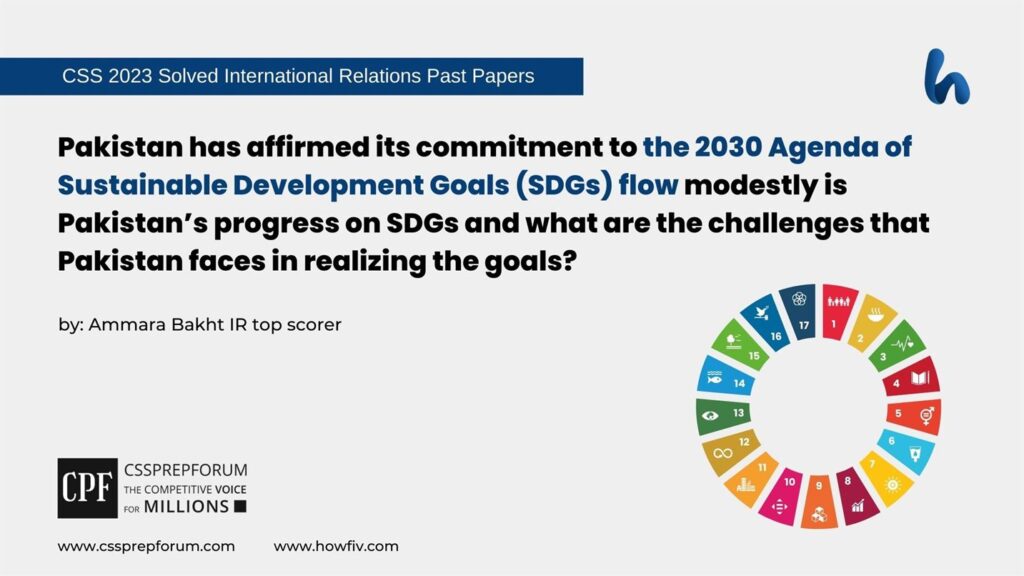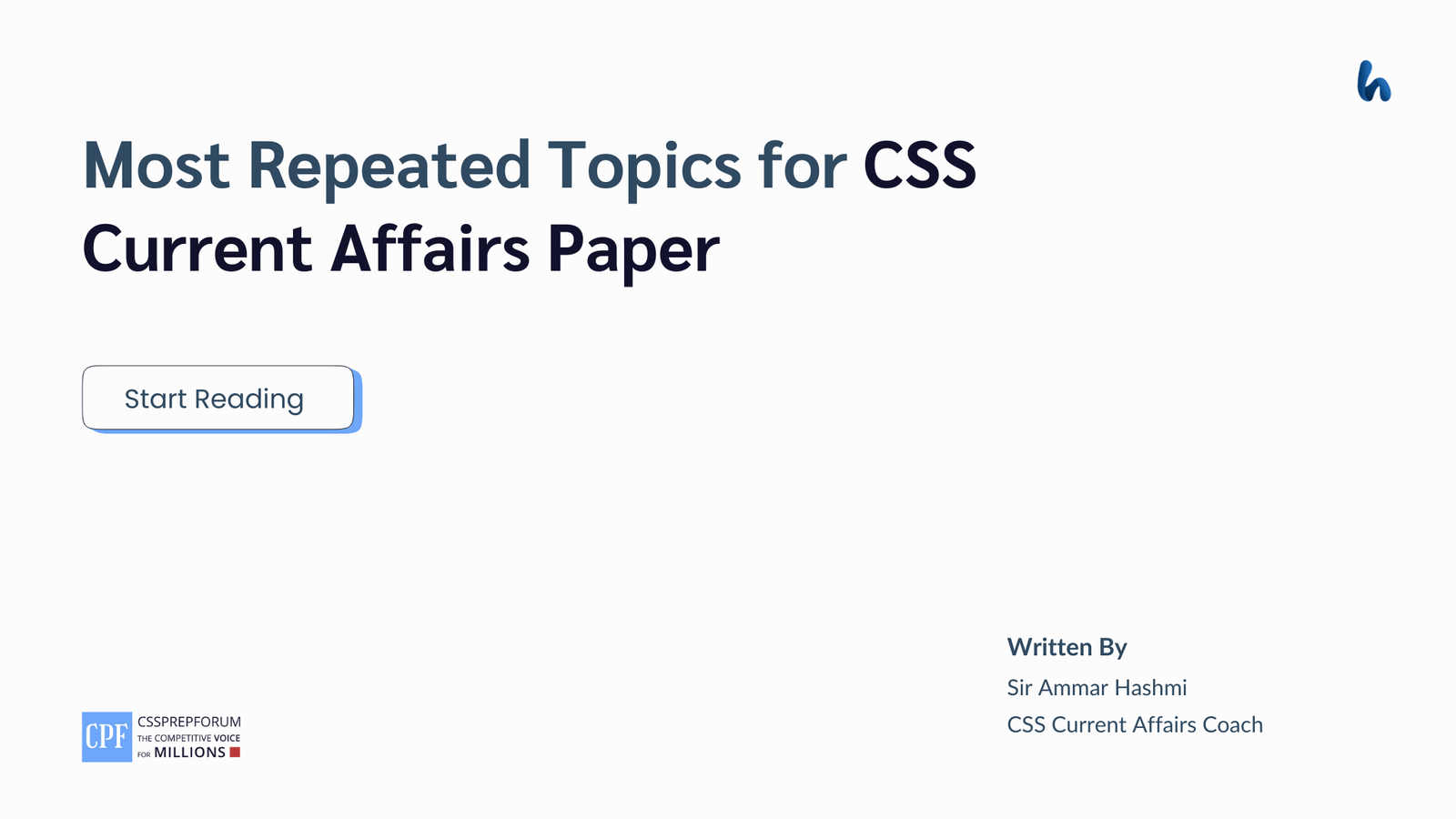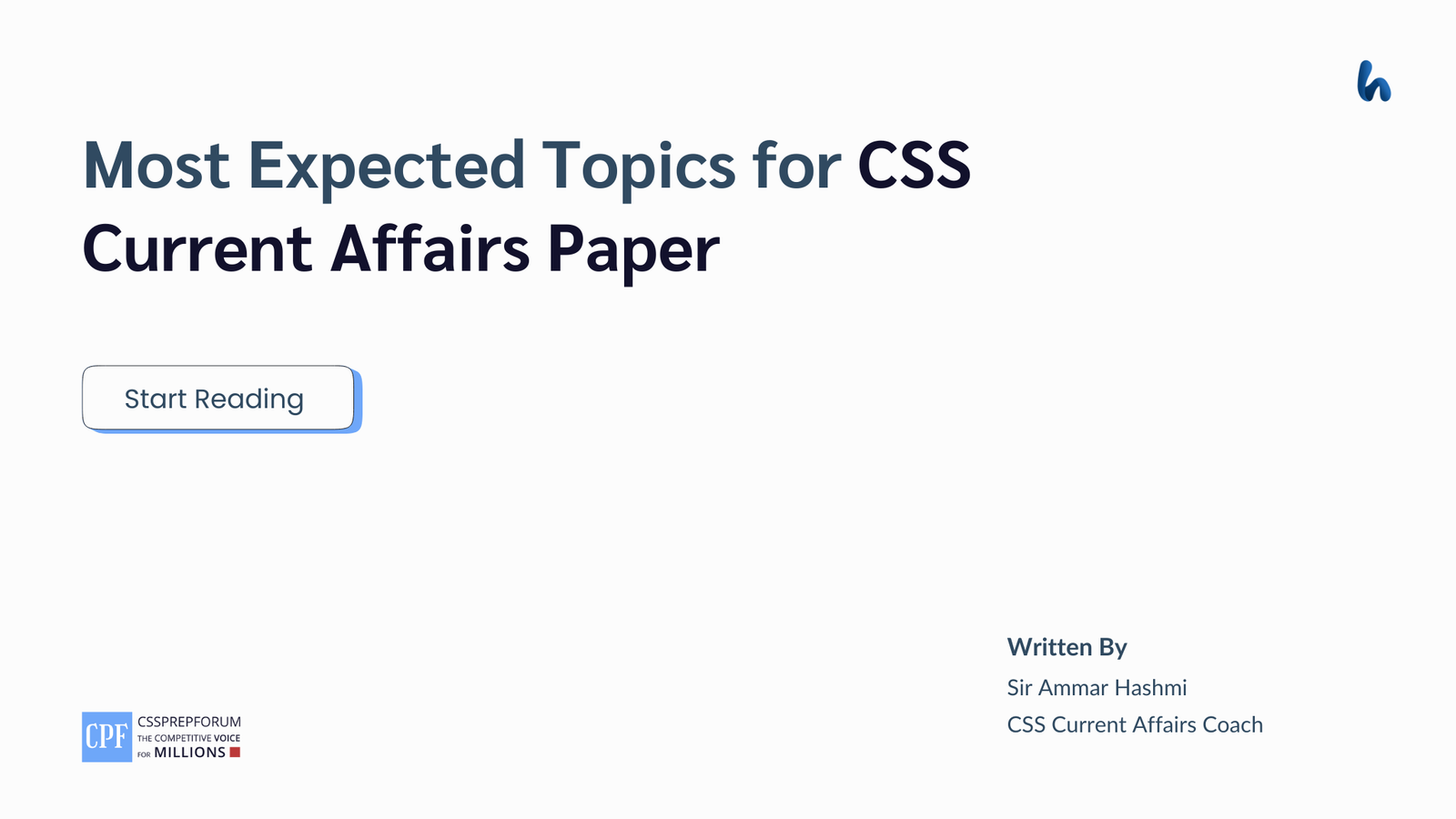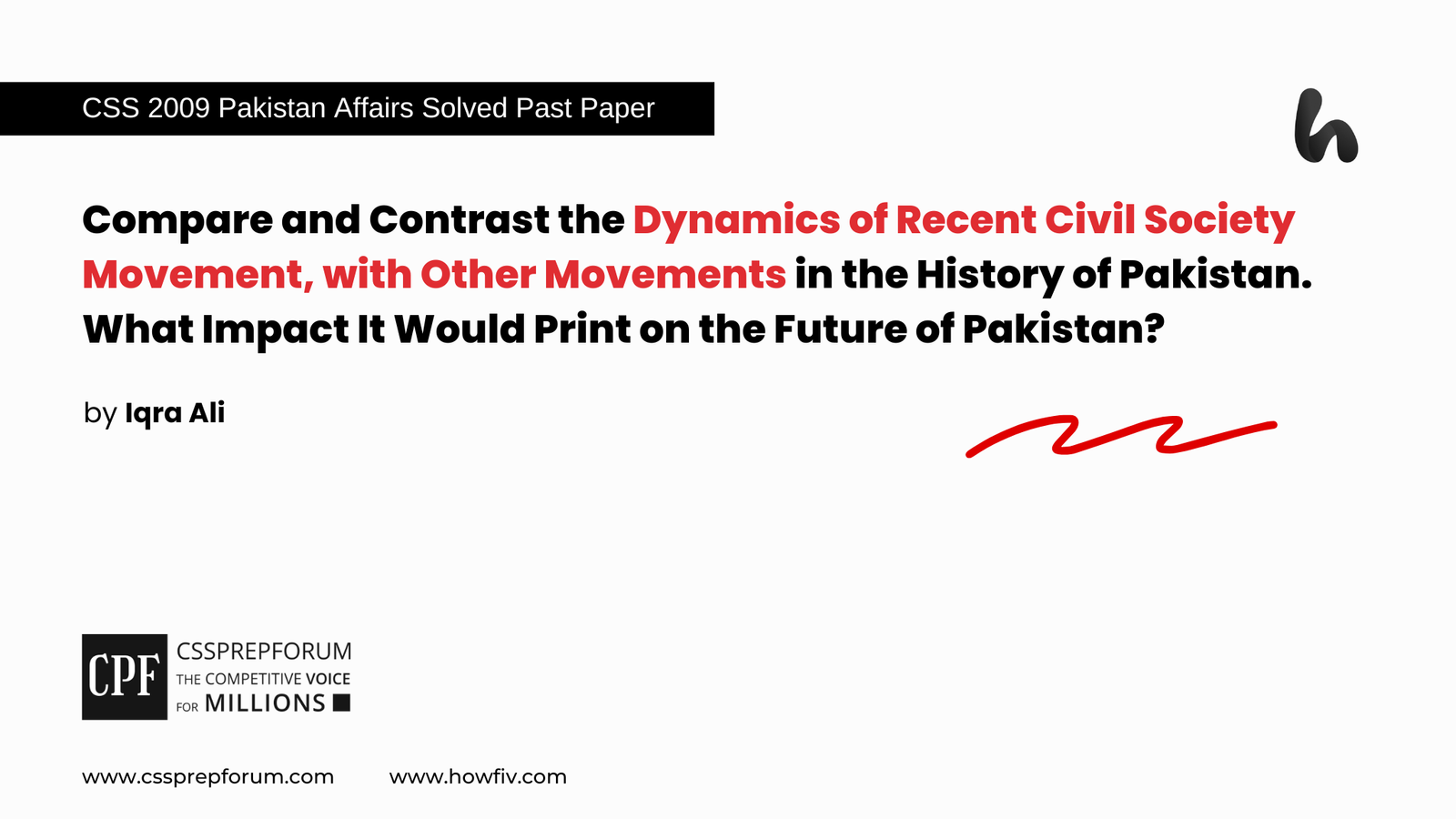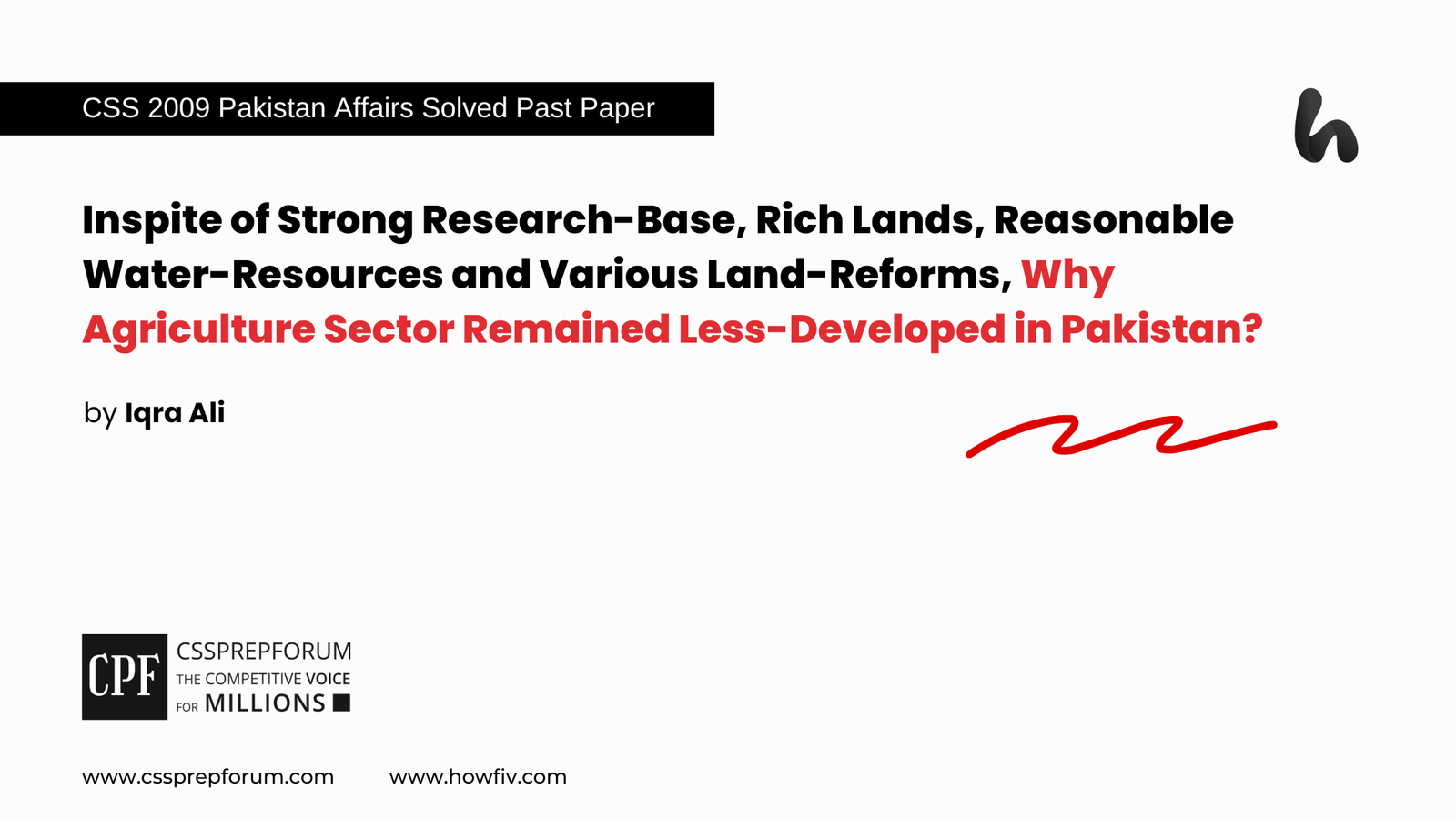CSS Solved International Relations Past Papers | What are the best policy options to deal with asymmetrical warfare?
The following question is attempted by Miss Abeera Fatima, the top scorer in CSS IR paper. Moreover, the answer is written on the same pattern, taught by Sir to his students, scoring the highest marks in compulsory subjects for years. This solved past paper question is uploaded to help aspirants understand how to crack a topic or question, how to write relevantly, what coherence is, and how to include and connect ideas, opinions, and suggestions to score the maximum.

Question Breakdown
The question is breakdown into two major parts: Pakistan’s commitment to the SDGs Agenda and the challenges faced by the country. Firstly, you give an explanation of what Agenda 2030 SDGs are meant for. Secondly, elaborate on the commitment of Pakistan to the targeted goals. Next to it, explain the challenges faced in achieving the targeted goals.
Synopsis
1- Introduction
2- An overview of the 2030 Agenda of Sustainable Development Goals (SDGs)
- ✓Salient features of the 2030 agenda
3- A glimpse of Pakistan’s progress on the 2030 Agenda of Sustainable Development Goals (SDGs)
- ✓Progress of all 17 SDGs at the national level
4- Challenges faced by Pakistan
- ✓Social and cultural barriers and women’s backwardness
- ✓Governmental issues vis-à-vis climate change
- ✓Economic instability provoking social chaos
- ✓Rampant poverty and population growth
5- Recommedial measures for countering the challenges
6- Conclusion

Answer to the question
Introduction
Sustainable Development Goals, undoubtedly, bring all the stakeholders at one pace. The salient features of the 2030 Agenda of Sustainable Development Goals, adopted by the United Nations in 2015, reveal the uniformity and collaboration of all nations. As far as Pakistan is concerned vis-à-vis the 2030 Agenda of SDGs, numerous signs of progress have made the country meet the global level of sustainability. To broach the evidence, improvement in poverty alleviation goals, nutrition goals, standards of education, availability of clean water, and marginalization of women in all sectors are some of the evidence to be quoted in the account. Nevertheless, a myriad of challenges has been faced in achieving sustainable goals in Pakistan. Therefore, some pragmatic and viable measures need to be devised in a way to curb these challenges in the best possible way.
An overview of the 2030 Agenda of Sustainable Development Goals (SDGs)
Sustainable Development Goals (SDGs) or Global Goals rectified by the world community, rather than 193 states, in 2015 to ensure sustained and inclusive economic growth, social inclusion, and environmental protection. It is adopted by the United Nations General Assembly (UNGA) known as the 2030 Agenda On 6 July 2017, the SDGs were made more actionable by a UNGA resolution that identifies specific targets for each goal and provides indicators to measure progress. The Global Goals are mentioned below:
- ✓ Goal 1 is to end poverty in all its forms everywhere.
- ✓ Goal 2 is to end hunger, achieve food security and improved nutrition, and promote sustainable agriculture.
- ✓ Goal 3 is to ensure healthy lives and promote well-being for all at all ages.
- ✓ Goal 4 is to ensure inclusive and equitable quality education and promote lifelong learning opportunities for all.
- ✓ Goal 5 is to achieve gender equality and empower all women and girls.
- ✓ Goal 6 is to ensure the availability and sustainable management of water and sanitation for all.
- ✓ Goal 7 is to ensure access to affordable, reliable, sustainable, and modern energy for all.
- ✓ Goal 8 is to promote sustained, inclusive, and sustainable economic growth, full and productive employment, and decent work for all.
- ✓ Goal 9 is to build resilient infrastructure, promote inclusive and sustainable industrialization and foster innovation.
- ✓ Goal 10 is to reduce inequality within and among countries.
- ✓ Goal 11 is to make cities and human settlements inclusive, safe, resilient, and sustainable.
- ✓ Goal 12 is to ensure sustainable consumption and production patterns.
- ✓ Goal 13 is to take urgent action to combat climate change and its impacts.
- ✓ Goal 14 is to conserve and sustainably use the oceans, seas, and marine resources for sustainable development.
- ✓ Goal 15 is to protect, restore and promote sustainable use of terrestrial ecosystems, sustainably manage forests, combat desertification, and halt and reverse land degradation and halt biodiversity loss.
- ✓ Goal 16 is to promote peaceful and inclusive societies for sustainable development, provide access to justice for all and build effective, accountable, and inclusive institutions at all levels.
- ✓ Goal 17 is to strengthen the means of implementation and revitalize the Global Partnership for Sustainable Development.
Salient features of the 2030 agenda
- ✓ Nature of universality
The scope of the 2030 Agenda is hidden in its nature which is universality; however, it commits all nations regardless of their economic and development status.
- ✓ Collective approach
Next to it, the 2030 Agenda eradicates social deprivation at the international level. Resultantly, it assists the common man which is the basic unit of any society.
- ✓ Connectivity
The Agenda is highly connected to all other stakeholders of the world. The globalized world is responsible for the implementation of SDGs targets.
- ✓ Across the board
Similarly, every participant in every segment of society is called at one pace- regardless of race, caste, creed, and gender- for the implementation of the targeted goals.
- ✓ Diversification
The diversification of the partnership for movement and contribution of knowledge, technology, and resources is also a feature of the 2030 Agenda
A glimpse of Pakistan’s progress on the 2030 Agenda of Sustainable Development Goals (SDGs)
Pakistan has become the first country in adopting the 2030 Agenda of Sustainable Development Goals. The United Nations (UN) system’s dedicated partnership with Pakistan is built around a shared purpose: “Delivering as One” to achieve the SDGs. In 2018, the government of Pakistan chalked out a framework named as National SDGs Framework to prioritize and localized SDGs. Nevertheless, Pakistan’s progress is needed to be highly appreciated. To do so, some facts and figures for achieving the targeted goals are mentioned.
- ✓SDG Goal 1:
Pakistan tries to improve its status for achieving goal 1. According to the World Bank report, poverty consistently declined in the period from 2014-2015 until 2018-2019, with 9.3 million people lifted out of poverty, based on the national poverty line. Likewise, a major decline is observed in Pakistan in the population growth rate owing to the disasters. Key initiatives such as Benazir Income Support Program (BISP), Bait-ul-Mal, Zakat, and Ushr programs, Employees’ Old-Age Benefits Institution, the Worker’s Welfare Funds, provincial Employees’ Social Security Institutions, and Ehsaas Program were introduced in the account.
- ✓SDG Goal 2:
Pakistan tries to incorporate goal 2. For instance, undernourishment declined to 37.6 % in 2017-18, and the prevalence of underweight children declined to 23 %. In 2011, the Pakistan Integrated Nutrition Strategy (PINS) was formulated to synergize interventions. In 2013, Pakistan joined the global Scaling Up Nutrition (SUN) movement, to scale up research, policy planning, monitoring mechanisms, and coordination among different stakeholders. In 2017, the Ministry of National Food Security and Research launched the country’s first National Food Security Policy and began implementing multi-sectoral nutrition strategies.
- ✓SDG Goal 3:
The manifestation of basic health facilities in Pakistan reveals the progress in achieving Goal 3. The number of mothers and children dying during pregnancy reduced by 32.6% from 2007 to 2019 is exemplified. Births attended by skilled health personnel increased by 10% in the five years from 2013 to 2018. National vaccination coverage improved by 11.5% in the period from 2013-2018.
- ✓SDG Goal 4:
In achieving quality education in the country, Pakistan remains malfunctioned. To illustrate, the primary school completion rate in the country stagnated at 67% in the five years from 2015-2020. Besides, the literacy rate remained at 60% according to World Bank.
- ✓SDG Goal 5:
On gender equality, Pakistan shows progress on the front foot. The proportion of women in managerial positions (SDG indicator 5.5.2) nearly doubled between 2015 (2.7%) and 2019 (4.53%). Physical violence reduced by 5.3% from 18% in 2012-2013 to 13.6% in 2017-2018 nationwide. Khyber Pakhtunkhwa and Balochistan, which had previously recorded the highest rates of physical violence against women (31%), saw numbers decline from 2013-2018 to 23.4% and 34.6%, respectively.
- ✓SDG Goal 6:
A meticulous improvement reveals at a national and provincial level in achieving the goal. Improved sources of drinking water are available to 94% of the country’s population. Access to improved drinking water in Balochistan increased by 17% from 2015-2020.
- ✓SDG Goal 7:
The progressing report of Pakistan’s commitment to the Goal 7 is acknowledged. The increasing share in renewable energy is four times between 2015 and 2019. Reliance on clean fuel for cooking nationwide increased to 47% in the period from 2018-2019, from the floor of 41.3% from 2014-2015.
- ✓ SDG Goal 8:
The speed of Pakistan on this goal is at a slow pace. The economy experienced a slowdown, with an annual growth rate of real GDP per capita declining to -3.36% in the fiscal year 2019-2020, from 2.04% in 2014-2015.
- ✓ SDG Goal 9:
Some developments were made on the SDG 9 targets. Despite the negative effects of COVID-19 in 2019-2020, the proportion of small-scale industries in total industry value added increased to 10.5% in 2019-2020, from 8.4% in 2014-2015.
- ✓ SDG Goal 10:
A decline was made in the reduction of income inequality; however, a 2% drop from 2016-2019 is observed.
- ✓ SDG Goal 11:
The urban population is flourishing in Pakistan; however, a decrease from 45% to 7% in the proportion of the urban population living in slums, informal settlements, or inadequate housing is observed. Besides, 45% in 2014 to 38% in 2018 are exemplified.
- ✓ SDG Goal 12:
Pakistan remains committed to addressing the problem of hazardous waste and achieving compliance with the Basel Convention as required under SDG 12.
- ✓ SDG Goal 13:
The nominal contribution to the goal occurs. National disaster risk reduction (DRR) strategies are adopted in line with the Sendai Framework on DRR, with a 2020 index score of 0.8, an improvement from 2018 when it was 0.4. Nevertheless, greenhouse gas (GHG) emissions grew by 375.03 million tons in 2016, a 2.5% increase from 2015.
- ✓ SDG Goal 14:
Pakistan sustains the proportion of fish stocks within biologically sustainable levels at 30% between 2015 and 2020.
- ✓ SDG Goal 15:
Despite the expansion of urban areas in Pakistan, the proportion of total land remained unchanged, at around 5% from 2015-2020.
- ✓ SDG Goal 16:
The role of strong institutions in the promotion of peace is immensely important. Thus, birth registration of children under five showed an improvement of 8.2% from 2013-2018.
- ✓ SDG Goal 17:
Pakistan is, undoubtedly, improving on its journey toward digital transformation. Fixed internet broadband subscriptions per 100 inhabitants increased by 20% in the three years from 2017-2020.
Challenges faced by Pakistan
Notwithstanding economic and financial challenges, Pakistan will continue to work towards achieving the SDGs through innovative, targeted, and focused implementation strategies in the social, economic, and environmental spheres.
- ✓ Traditional cultural dietary practices and women’s backwardness
Changing centuries-old traditional cultural dietary practices is also challenging. Efforts to date suggest that expanding the coverage and improving the quality of education offers a vital lever for effectively addressing malnutrition in the country. SDGs 1, 2, 3, 4, 5, 6, 9, 10, 12, 13, 14, 15, 16, and 17 are directly linked with the availability of, access to, and consumption of safe, nutritious, and sufficient food while promoting sustainable agriculture to achieve zero hunger.
- ✓ Governmental issues vis-à-vis climate crime
The challenge of the government’s initiatives on sustainable development surrounding global warming and other climate issues is prevailing in Pakistan. To illustrate, there is a political initiative to reject environmental issues and sustainable development goals to instead address the immediate needs of their country or the populous. For instance, promoting and supporting the legacy of fossil fuel industries because of supporting deprived local communities and areas. Contrarily, the closure of industries creates unemployment and loss of jobs in the area. Thus, in these locations, many governments are resistant to change related to sustainable development programs. SDGs 5, 6, 7, 12, 13, 14, 15, and 17 are linked with it.
- ✓ Economic instability provoking social chaos
The prevailing global financial issues are, ultimately, risking the poorest people at stake. Due to the interconnectedness of world trade, there are many synergies between nations around the world, and what affects one country can also impact another indirectly. SDGs 1, 3, 4, 5, 7, 8, 9, 10, 11, 12, 14, 15, 16, and 17 are directly linked with economic sustainability and development.
- ✓ Rampant poverty and population growth
One of the goals of sustainable development is to end poverty but this is no easy task and cannot be done without addressing a number of other issues that contribute to poverty. Some of the issues are related to inequalities and economic opportunities that people face. This can be inequalities between different countries. It’s well known that people in developed nations tend to be better off financially than those individuals who live in developing nations. In addition, another potential challenge for sustainable development is population growth in Pakistan. The larger the world’s population the more resources are needed to ensure that people remain out of poverty and have utilities such as fresh water and electricity. At 230m people in 2022, Pakistan is the fifth most populous nation in the world and is on track to balloon to around 300m by 2030. SDGs 1, 2, 3, 4, 5, 6, and 10 are linked with the most vulnerable and marginalized people, who benefit from effective social protection systems.
Remedial measures for countering the challenges
- National and provincial policies and plans of action are needed to be devised through political and civic consensus that is localizing and prioritization.
- Transparency of public expenditure should be prioritized for better accountability and good governance.
- Collaboration of a non-partisan parliamentary task force comprising national and provincial parliamentarians with think tanks and the Pakistan Institute of Parliamentary Services for the provision of achieving SDGs is the need of the hour.
- Planning and Development Board will need to formulate six prerequisites for successfully implementing the SDGs: governance and oversight, goal and indicator setting, implementation mechanisms, coordination, developing budgets, and, finally, allocating resources.
- New models of public-private partnership need to be tested by proactively engaging the private sector, research universities, think tanks, and civil society, including professional associations.
Conclusion
Global goals are a collection of objectives design to achieve a better and more sustainable future for all. 2030 Agenda of Global goals, adopted by the United Nations, are to transform the world by engraving poverty free, hunger free, gender equality, availability of clean water and many more; thus, it is the extension which needs to be achieved by 2030 by 193 stakeholders. In case of Pakistan, gladly, a sign of brightness has seen. A myriad of evidences is needed to quote in the account: improving standard of living, quality of education, promotion of gender equality, and availability of clean water. Although Pakistan is struggling to achieve the targeted goals, yet some challenges crippling the success. However, a meticulously plan of action is the call for demand.
CSS Solved Past Papers’ Essays
Looking for the last ten years of CSS and PMS Solved Essays and want to know how Sir Kazim’s students write and score the highest marks in the essays’ papers? Then, click on the CSS Solved Essays to start reading them.
CSS Solved Essays

CSS Solved General Science & Ability Past Papers
Want to read the last ten years’ General Science & Ability Solved Past Papers to learn how to attempt them and to score high? Let’s click on the link below to read them all freely. All past papers have been solved by Miss Iqra Ali & Dr Nishat Baloch, Pakistan’s top CSS GSA coach having the highest score of their students.
General Science & Ability Solved Past Papers
CSS Solved Pakistan Affairs Past Papers
Want to read CSS Pakistan Affairs Solved Past Papers and learn how to attempt them to score high? Let’s click on the link below to read them all freely. All past papers’ questions have been attempted by Sir Kazim’s students, who scored the highest in the subject.
CSS Solved Pakistan Affairs
CSS Solved International Relations’ Past Papers
Have you opted for International Relations in the CSS examination and want to score above 150? Then, click on the CSS Solved International Relations’ Past Papers by Miss Abeera Fatima, the top IR scorer and the best IR coach in Pakistan.
CSS Solved International Relations Past Papers
Articles Might Interest You!
The following are some of the most important articles for CSS and PMS aspirants. Click on any to start reading.

